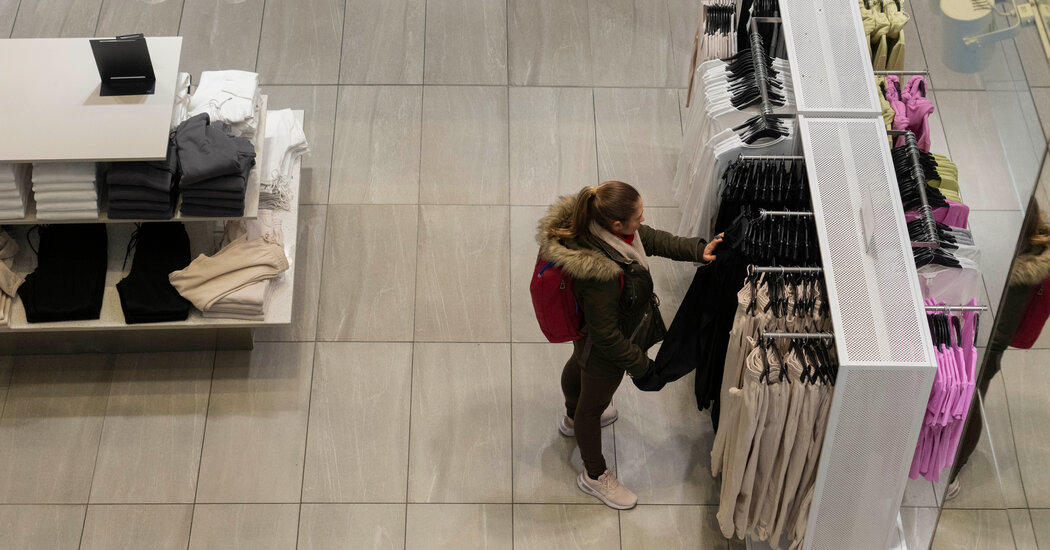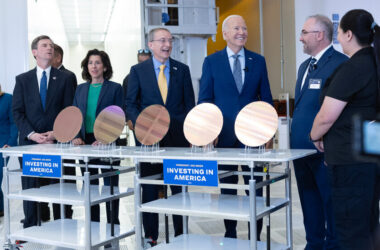The latest reading of the Federal Reserve’s favorite inflation gauge was in line with economists’ expectations, as price increases hovered above the central bank’s target even after months of cooling.
The Personal Consumption Expenditures inflation measure climbed by 2.5 percent in February compared with a year earlier, according to a report released by the Commerce Department on Friday. Economists in a Bloomberg survey had expected an increase of that size, a tick higher than the rise of 2.4 percent in January.
The Fed officially targets that measure as it tries to achieve 2 percent annual inflation, so the latest reading, while widely anticipated, is evidence that inflation still has farther to fall. The fresh reading is unlikely to shake Fed officials from the cautious and patient stance they have taken in recent months as they contemplate when and how much to cut interest rates this year.
The report’s details underscored that inflation continues to moderate, even if the process is bumpy. A closely watched measure that strips out volatile food and fuel prices for a clearer reading of underlying inflation climbed 2.8 percent, in line with what economists had expected for that “core” index and slightly cooler than the previous month. And on a monthly basis, inflation cooled slightly.
The latest inflation readings are much milder than the highs reached in 2022, when overall inflation peaked at 7.1 percent and core at nearly 5.6 percent on an annual basis.
“It reinforces that inflation is on its way down,” said Gennadiy Goldberg, head of U.S. rates strategy at TD Securities, explaining that he thinks Friday’s report will keep the Fed on track for a rate cut in June. “I don’t think they’re going to come out and change their tone; they don’t really need to.”
The economy appears to be holding up even as inflation decelerates, which could give Fed officials confidence that they are managing to steer it to what is frequently called a soft landing. Consumers continued to spend at a robust clip last month, Friday’s report showed, even after months of high interest rates. The economy’s resilience is giving officials room to be patient without worrying too much that the United States is sliding into a recession.
Central bankers quickly raised interest rates to about 5.3 percent between early 2022 and the middle of last year, and have held them steady at that relatively high level for months in an effort to cool the economy and rein in inflation. Officials are now considering when they can cut rates, but they want to be sure that inflation is on a clear path back to 2 percent before adjusting policy.
Fed officials are weighing two big risks as they consider their next steps. Leaving rates too high for too long could squeeze the economy severely, causing more damage than is necessary. But lowering them too early or by too much could bolster economic activity and make it harder to fully stamp inflation out. If rapid price increases become an embedded feature of the economy, officials worry that it could prove even more difficult to quash them.
As policymakers think about how much more cooling in inflation they need to see before cutting interest rates, they are watching both progress on prices and the momentum in the economy as a whole.
Friday’s report showed that consumption climbed 0.8 percent in February from the previous month, notably stronger than economists’ expectations. Spending was solid even after adjusting for inflation, as consumers opened their wallets for purchases like airline tickets and new trucks.
The labor market has also remained solid, though job openings have come down after reaching very high levels in 2021 and 2022. Fed officials have suggested that they might view a marked slowdown in hiring — or a jump in unemployment — as a reason to cut rates earlier.
For now, investors expect central bankers to cut interest rates in June after holding them steady at their next meeting, in May.



